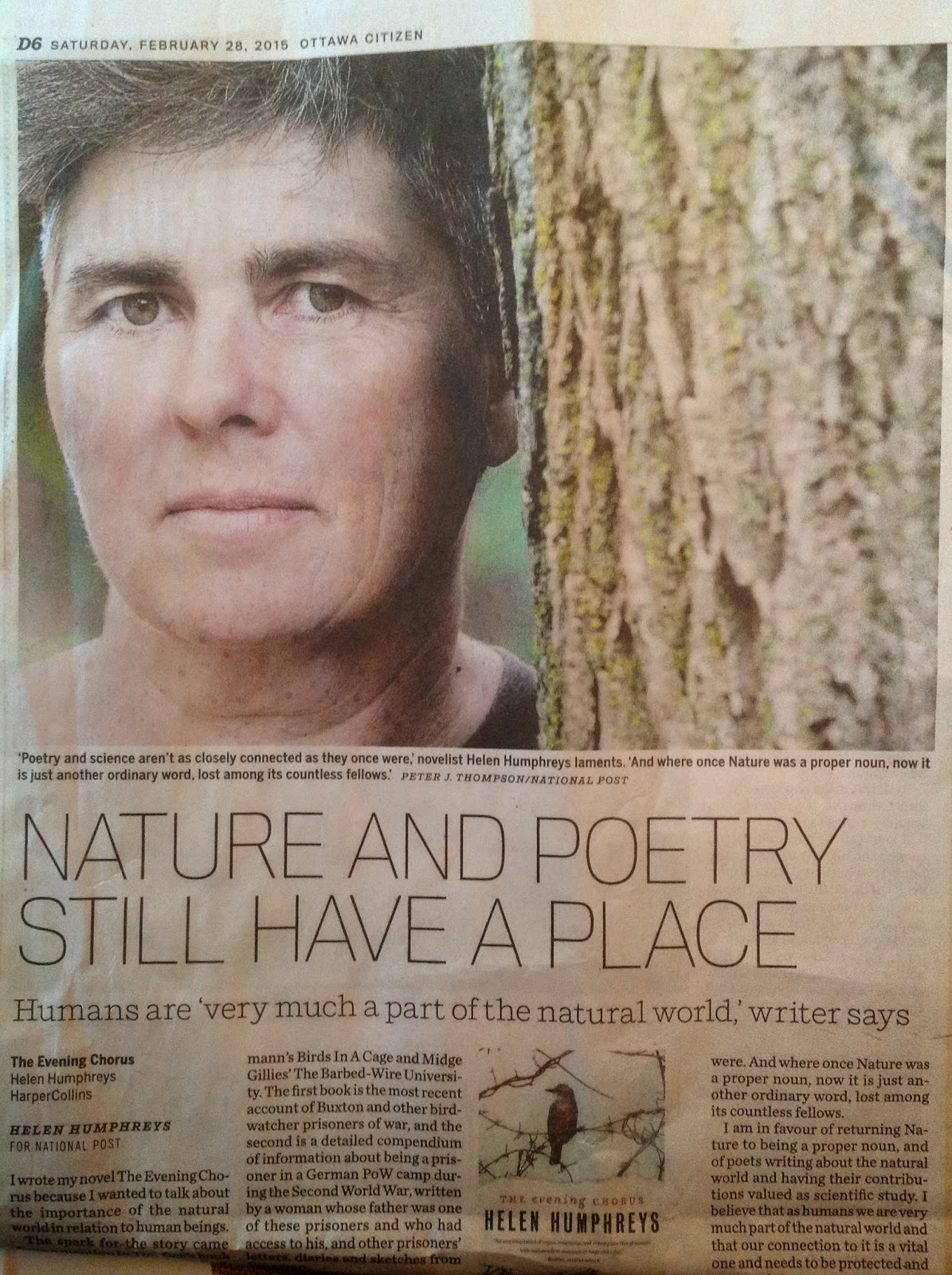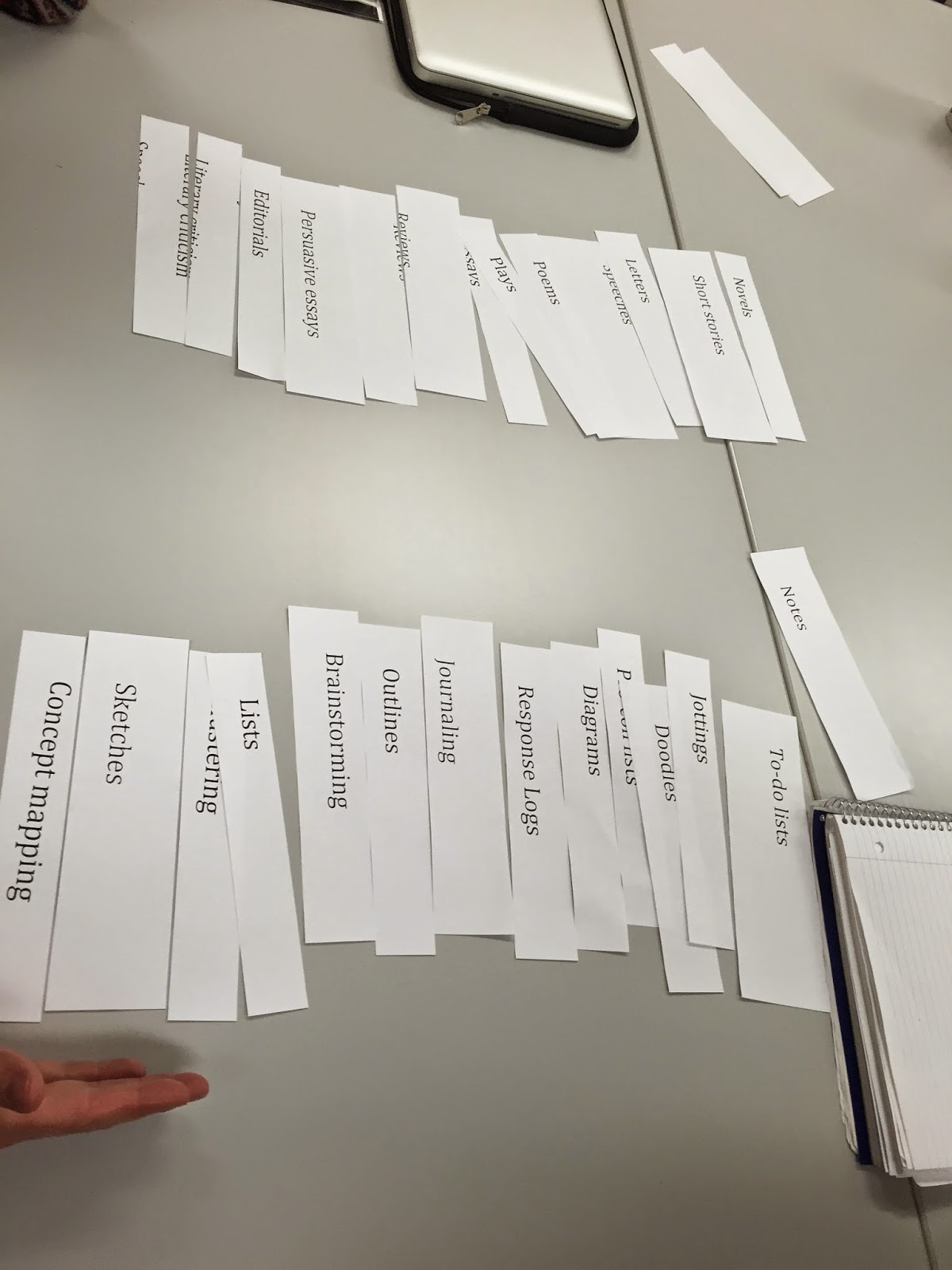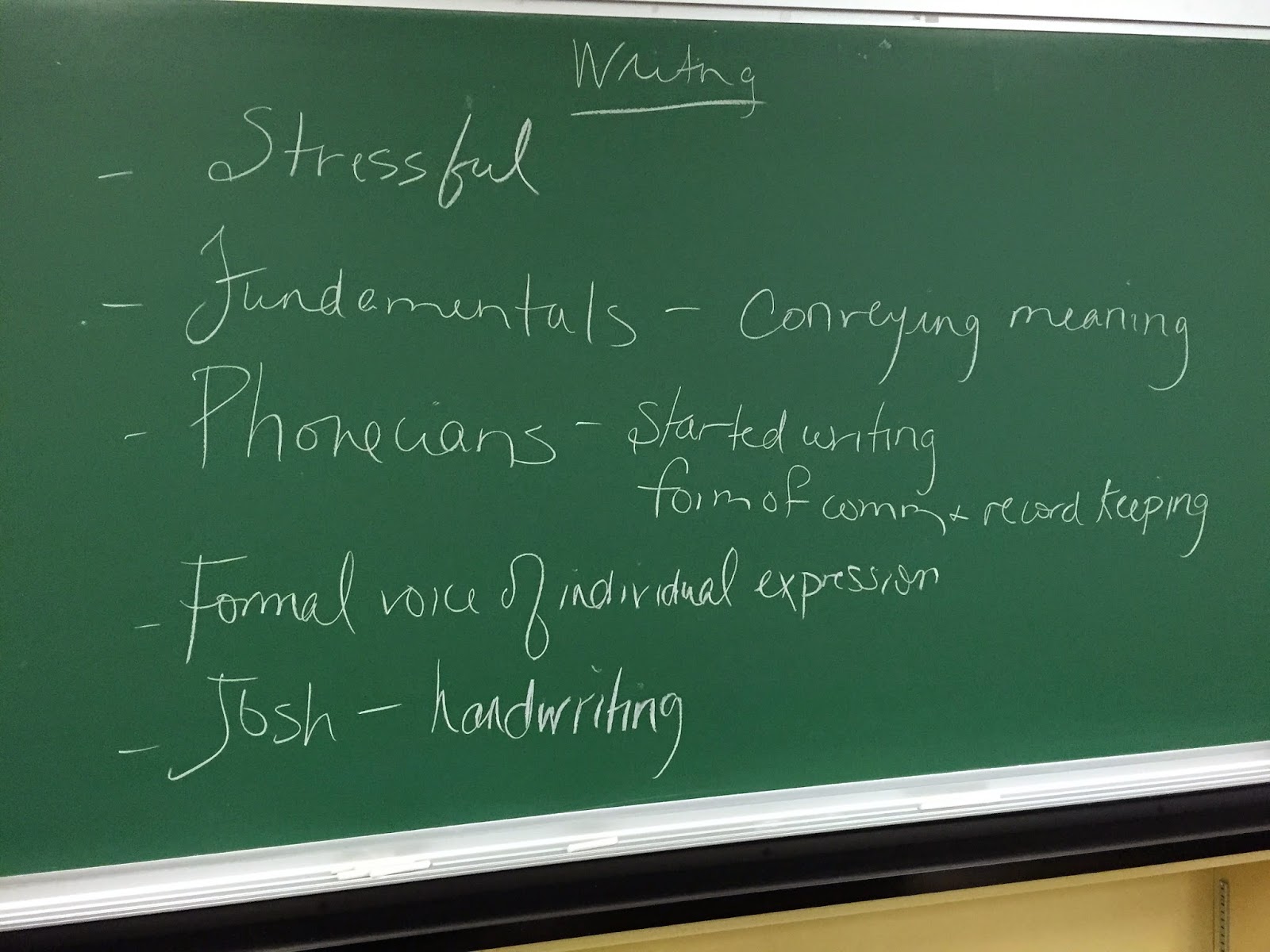This
past week, we had the great fortune of having the award winning poet Deanna
Young come to visit our class and speak to us about poetry across the
curriculum. Leading up to her visit, I mentioned a few times that Deanna was
one guest speaker not to be missed; she did not disappoint. Beginning with taking up Peterson’s chapter
on poetry in Writing Across the
Curriculum, Deanna noted that in reading it she jotted down many ideas that
came to mind, but the one things she felt that was missing was the significance
of affect when it comes to the reading of poetry.
Beginning
with the provocative question: “Is poetry just about another new tool, to use
the cliché in your toolbox, to teach content or is there another reason?”,
Deanna addresses what poetry across the curriculum means to her:
I think if you are a are a teacher
if you going to use poetry across the curriculum, the only way you can use it
effectively and get the most out of it is if you are seeing it for what it is.
To me the article doesn't get at that essence. It talks more about thinking and
precision and those kinds of things but it doesn't talk about the heart and the
transformative power of poetry. Peterson’s reading does address how to make
poetry accessible to students, but it skips over why students will care or
bother to use it. My question is how do you turn kids onto poetry and use it so
it is something they will actually embrace and are drawn to and are not just
dismissing in your classroom as another little gimmick that the teacher is
using and she or he wants me to write an acrostic poem and come up with a poem
through the letters of my name: “D is for dynamic.” Is that something that
really meant a lot to you and turned you into a poetry reader and writer? Does
that turn kids onto poetry? I don’t believe it ever has. Keep that in mind whether you are using
poetry in English, Math or Geography – remind yourself of poetry’s essence and
what it can do for us as human beings. That is really what poetry should be about.
To
help us experience what she was speaking about, Deanna them took us on a little
adventure of writing poetry. Writing two titles on the board - The
Beauty of Math or The Trouble with
Math - Deanna gave us the rules that you could not use the word “math” in
the body of our poems, and you cannot use word numbers or digits 1, 2 or 3 ad
infinitum. The poem must be 9 lines of any length.
As
intended, this little exercise did the trick, as we all furiously wrote,
challenging ourselves to convey our ideas about math without breaking any of
the rules, which of course pushed us to new plateaus of engaging with our connections
to math. Not surprising, considering my own math anxiety, I worked with the
title The Trouble with Math and here
is my little attempt:
The marks on the chalkboard stare at
me
With symbols and signs I can’t
discern
Oh how I wish I could remember those
formulas
And could magically sweep through
each equation
The grand finale would stand before
me like a final bow
I would feel the exhilaration of a
good performance
I would hear the applause of all
those towering teachers in my past
I would then be ready to take on
another challenge
And feel like Harry Potter all over
again.
Even
though, unlike the other brave souls in the class, I did not offer to share my
own little comic twist on my own feelings of loss and desire around math, our
classroom became alive with reading performances that shared a range of
perspectives on math that got underneath how, for some, poetry was a means of
communicating logic to the hot topic of math anxiety.
Experiencing
poetry’s ability to surprise and bring to the surface our emotional experiences
around a subject which has a bad rap of being cold and calculating, Deanna then
set the stage to share some poems that she had thought could be used across the
curriculum. Bringing us into the
wonderful world of ‘what if’, Deanna asked us to consider whether Dylan
Thomas’s The force that through the green
fuse drives the flower was used in Biology would shake students awake. In
Basho’s The petals tremble, students
could experience the contrast of the delicate petals on a mountain rose in
juxtaposition to the overpowering rapids below.
Asking how we could perhaps see Mary Oliver’s Alligator Poem fitting into the curriculum, ideas of how it could
be used in Art because of its imagery, Geography to talk about the ecosystem
and the everglades, or a way to talk about Darwinism in Biology all emerged as
possibilities. Theodore Roethke’s My
Papa’s Waltz also applies to a ream of subject area uses such as the Arts
or Family Studies where it may be a venue for high school students to loosen
their own memories of childhood.
Moving
from discussing My Papa’s Waltz’s strict
rhyme scheme, we moved to considering another master of rhyme and one of my
favorite poets, Dr. Seuss. Reading From One
Fish, Two Fish, we talked about an array of uses for the lines of this
prolific poet’s work, including The Lorax which many would say has done more
to bring ideas of the environmentalism to both short and tall people then any
other piece of literature. Turning to another serious subject, we were
introduced to Louise Gluck’s Wild Iris,
which could be a significant catalyst to talk about mental health if we read
the iris as human. Last but not least, Gwendolyn Brooks’ We Real Cool was put on the table as a means to inspire students to
write about an issue that is important to them in an eight-line poem using
rhyme and contemporary vocabulary.
In
closing, Deanna implored us to liberally use poems as models for student
writing, as we all start writing by mimicking. While she only had about two
hours of time to share with us before running off to work her magic as a web
editor at the Social Sciences and Humanities Research Council, we won’t soon
forget that we need to keep asking the question of what poetry can bring into
our lives and what it can do for us as human beings.

















